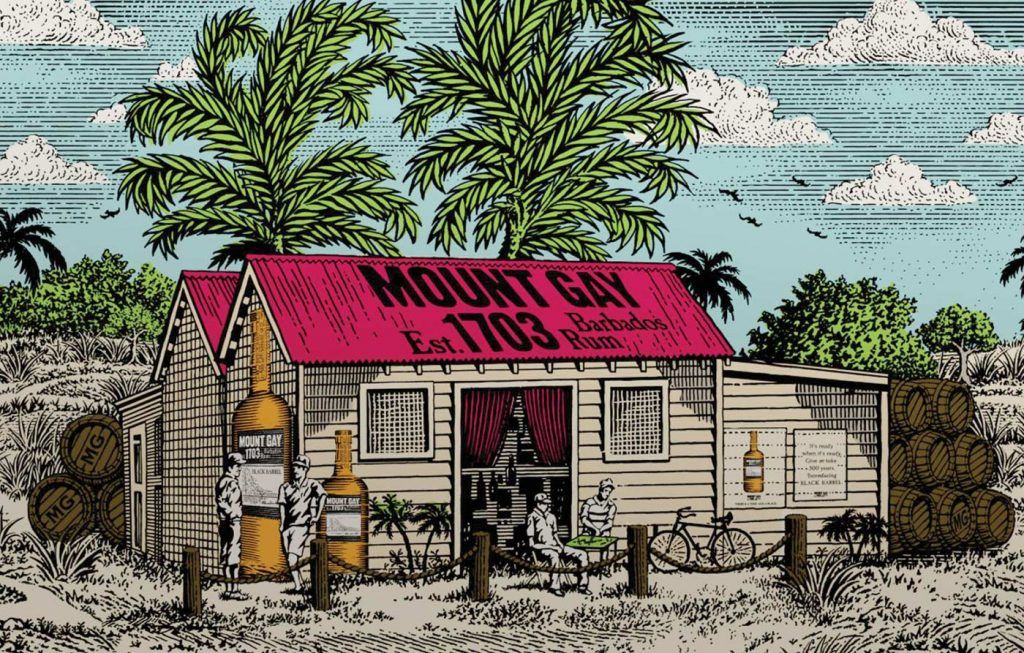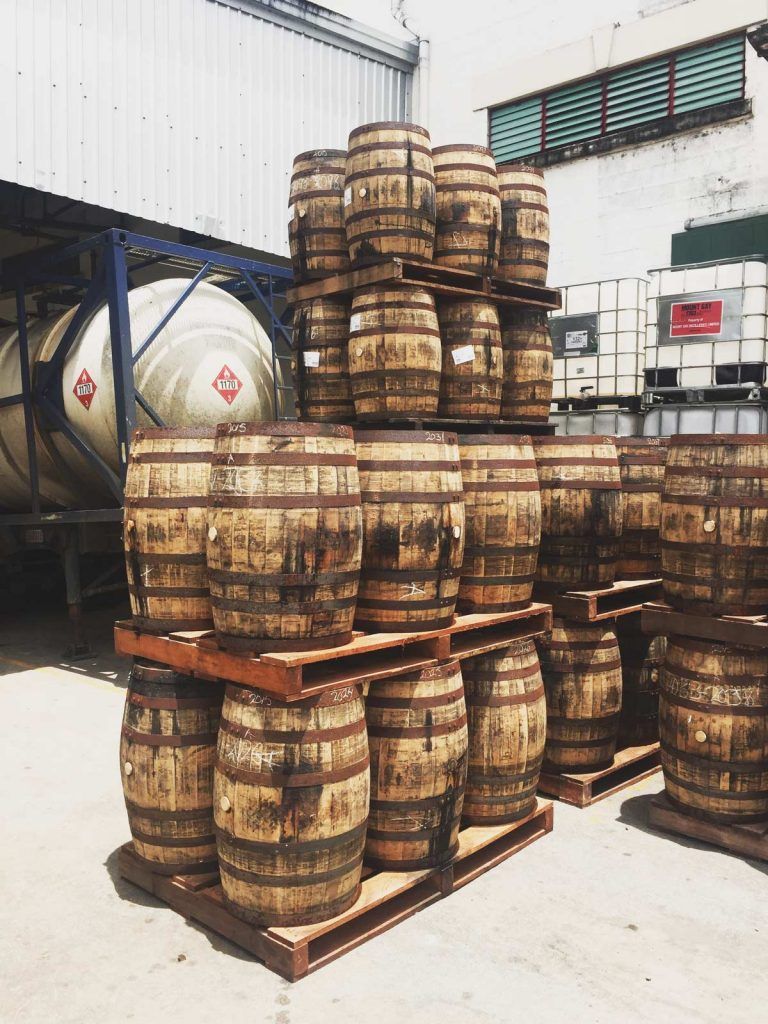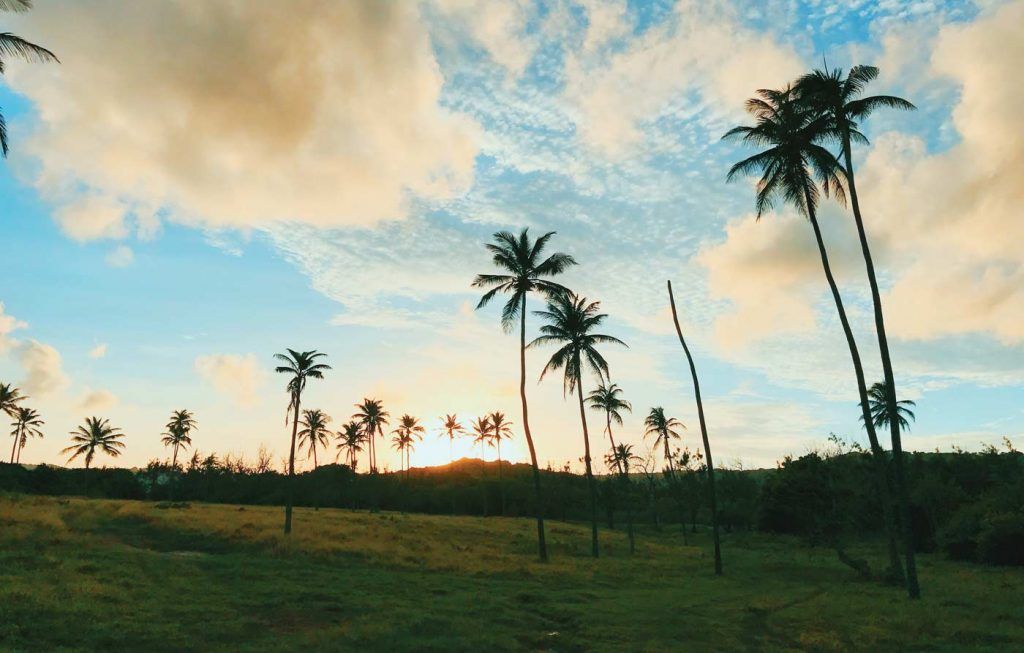400 Years of Barbados in 48 Hours
Generally, when you travel halfway around the world to go somewhere, you will spend more than 48 hours there, but Barbados is one of those places that is so condensed and rich with culture and heritage that even after a couple of days there you will have a part of it in your blood. Along with a bit of rum.
Officially my trip to the Barbados could be classed as a business trip, as manager of the Sweat Shop Brew Kitchen, I was flown courtesy of the famous Bajan export, Mount Gay Rum. My team had done a spectacular job of selling some of the highest number of units in the country, so as a reward to them, I went with a few other winners for a few days to the home of one of the world’s oldest rum producers.

Barbados is everything you might imagine it to be. Golden beaches and turquoise waters surrounding a fusion of assimilated and conquered cultures. This goes back to about the 1620s BC, when the island’s first indigenous people, the Arawaks, arrived in their dugout canoes after setting out from Venezuela. The Awawaks had the run of the place for quite a while, until 1200, when they were conquered by Carab Indians. When the first Europeans started arriving in the 1500s, mainly the Portuguese en route to Brazil, the Carab Indians decided to leave them to it, so when the English decided in the 1600s that they were going to claim the island, there really wasn’t a lot to stand in their way.
Over 400 years of British influence can be seen in all aspects of Bajan life, from the architecture to the love of cricket, to culinary delicacies like fish and chips, pickled pork, black pudding, macaroni pie and baked custard.
However, it was British development of the sugar cane industry that really shaped the island. So successful was the export demand for this crop that the growing of it has, to this day, literally shaped the landscape. It has also shaped the population. Early in the piece, farmers used the indentured labour of British prisoners or servants, but when that became too expensive, they looked to West Africa to solve their labour issues in the form of hundreds of thousands of slaves. By the early 1800s, almost 400,000 slaves had been shipped to Barbados, their numbers forming 80 percent of the population.
As a group of pale New Zealanders thrust out of winter onto a Caribbean island with a population of mainly West African descent, it would be fair to say we stood out a bit, but everyone we met welcomed us with open arms and, more often than not, some form of alcohol.

After a good 24 hours of flights and transit waits from Auckland via LA and Miami, our first morning stop in Barbados was at a rum shop for a beer at 11am. While it was probably the last thing I felt like doing initially, it was perfect introduction to this very special place. Barbados is a speck on the map, but it just feels like it’s at the centre of so much – not just historically, but also geographically. One hint of this came via one of the few white Bajans at the shop. His tanned and leathered face, well worn by his experiences, still mustered a great smile. He introduced himself to us and before long was giving us his life story, which included his career as a cocaine smuggler. Barbados is a handy central point between the sources of the drugs and its market – the US. He started to do so well at this that the US put his mansion under surveillance. It was at this point he decided that he had better things to do with his time. Like talk to New Zealand tourists in a rum shop at 11am. While chances are that not every rum shop will have a resident retired drug runner, each is still a unique experience that includes the marketing posters that line the walls. Think the sort of pre-politically correct stuff of the 1980s – only these are most likely printed recently.
After that it only seemed fair that we visit the home of Mount Gay Rum – while there’s obviously a local demand for good rum, the global demand for a taste of Barbados has made Mount Gay Rum a recognisable brand in the 110 countries it is exported to. Given the global footprint, I was really surprised at just how down to earth the operation is. And while I am sure there has been some modernisation along the way, the actual process seems to have changed little since the company first started in the 1700s.
All the fun begins with a byproduct of processing that aforementioned sugar cane, molasses. The viscous liquid is mixed with water in large open vats with what can really be best described as giant wooden mixing sticks before being boiled and fermented for a few days, but that’s the quick bit. The alcohol is then matured for years in reused American bourbon casks.

Hundreds of barrels, stacked to the ceilings, row after row, line the warehouses in what must be millions of dollars’ worth of stored inventory – just sitting there getting better. From a standard business perspective, this is a hard thing to get your head around, but then, of course, this isn’t a standard business. When that golden-hued liquid is finally ready to be enjoyed, it carries with it the nuances and flavours of a process that has been shaped over centuries. And that’s a big responsibility.
The locals are proud of their rum, but there’s even more than that going on. Even the most fleeting visit to the island isn’t complete without paying homage to the ‘mecca’ of cricket, Kensington Oval. There is no doubt what the favourite sport on the island is, and the modern stadiums have been well invested in. And if you like a little bit of your typical Caribbean/colonial English historical architecture, you will find some impressive plantation houses and even garrisons to whet your appetite.
For a small island, there is actually a lot of things for any tourist to see and do, from lagoon submarines to history tours to clubbing to fine restaurants. You could spend months trying to do everything, so 48 hours will fill very quickly. Whatever you do, though, when you get to Barbados, just make sure you take a moment to go for a swim. The water is warmer than anything you will find in the Pacific. Afterwards, relax with a good rum – neat. Then go and talk to a local at a rum shop. You just never know what history they’ve got.
8 Barbados Attractions For a Flying Visit
1. Concorde – If you never had the opportunity to fly in a Concorde, you still have the chance to hang out in one at Barbados Airport. Get a guided tour of the aircraft and try your hand out on a flight simulator. A strange place for a supersonic jet to be parked up, maybe, but still cool nonetheless.
2. Cove Bay – A tough area to get to, but once you are there, you will in most cases have the bay and its dramatic rock formations and some of the best views on the island to yourself.
3. Mount Gay Rum Tour – Take one of the daily Mount Gay Rum Tours for a behind-the-scenes perspective of the world’s oldest rum brand.
4. Harrison’s Cave – If stalactites, stalagmites and calcite deposits in general are your thing, the Harrison’s Cave limestone cavern will be just the ticket.
5. Carlisle Bay – For swimming and snorkeling, this is the place to be. Plenty of marine animals and the odd shipwreck add some drama to the otherwise relaxing waters.
6. Bridgetown – This UNESCO-rated capital of Barbados is the place to go for a good dose of history while you view Victorian style Gothic Parliament Buildings to grand statues of colonial heroes like Nelson.
7. Garrison Savannah Historic Area – Near Bridgetown is the Garrison Savannah Historic Area, which is, as the name suggests, the perfect spot for even more history. The area includes famous buildings including George Washington House, where the first president of the United States took refuge in the 1750s.
8. Rum Shops – For a real taste of Barbados, visit one of the many rum shops that dot the island. You never know who you will meet.

